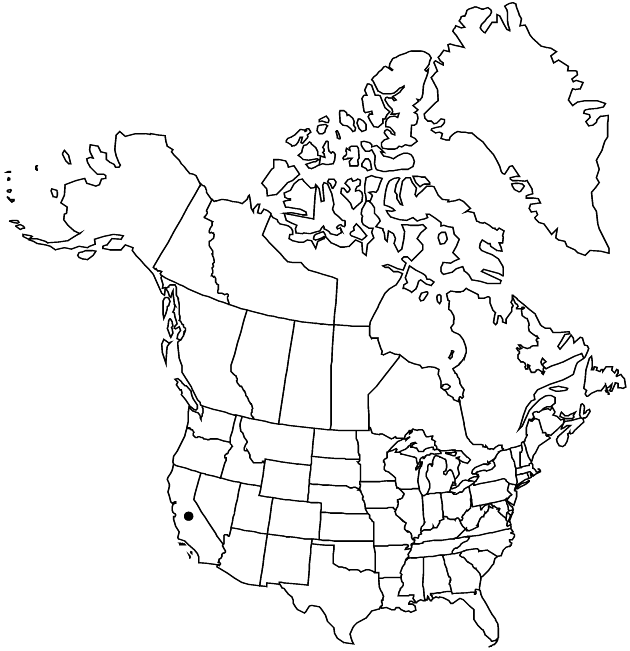Difference between revisions of "Packera clevelandii"
Phytologia 49: 46. 1981.
FNA>Volume Importer |
imported>Volume Importer |
||
| (5 intermediate revisions by 2 users not shown) | |||
| Line 8: | Line 8: | ||
}} | }} | ||
|common_names=Cleveland’s ragwort | |common_names=Cleveland’s ragwort | ||
| − | |basionyms={{Treatment/ID/ | + | |special_status={{Treatment/ID/Special_status |
| + | |code=E | ||
| + | |label=Endemic | ||
| + | }} | ||
| + | |basionyms={{Treatment/ID/Basionym | ||
|name=Senecio clevelandii | |name=Senecio clevelandii | ||
|authority=Greene | |authority=Greene | ||
| + | |rank=species | ||
| + | |publication_title=Bull. Torrey Bot. Club | ||
| + | |publication_place=10: 87. 1883 (as clevelandi) | ||
}} | }} | ||
|synonyms={{Treatment/ID/Synonym | |synonyms={{Treatment/ID/Synonym | ||
|name=Senecio clevelandii var. heterophyllus | |name=Senecio clevelandii var. heterophyllus | ||
|authority=Hoover | |authority=Hoover | ||
| + | |rank=variety | ||
}} | }} | ||
|hierarchy=Asteraceae;Asteraceae tribe Senecioneae;Packera;Packera clevelandii | |hierarchy=Asteraceae;Asteraceae tribe Senecioneae;Packera;Packera clevelandii | ||
| Line 39: | Line 47: | ||
-->{{#Taxon: | -->{{#Taxon: | ||
name=Packera clevelandii | name=Packera clevelandii | ||
| − | |||
|authority=(Greene) W. A. Weber & Á. Löve | |authority=(Greene) W. A. Weber & Á. Löve | ||
|rank=species | |rank=species | ||
| Line 53: | Line 60: | ||
|publication title=Phytologia | |publication title=Phytologia | ||
|publication year=1981 | |publication year=1981 | ||
| − | |special status= | + | |special status=Endemic |
| − | |source xml=https:// | + | |source xml=https://bitbucket.org/aafc-mbb/fna-data-curation/src/2e0870ddd59836b60bcf96646a41e87ea5a5943a/coarse_grained_fna_xml/V19-20-21/V20_1294.xml |
|tribe=Asteraceae tribe Senecioneae | |tribe=Asteraceae tribe Senecioneae | ||
|genus=Packera | |genus=Packera | ||
Latest revision as of 19:59, 5 November 2020
Perennials, 30–80+ cm; taprooted (caudices suberect to erect, stout). Stems usually 1 (sometimes more, clustered), glaucous. Basal leaves (and proximal cauline, relatively thick and turgid) petiolate; blades lanceolate to narrowly oblanceolate, 30–100+ × 10–20+ mm, bases tapering, margins entire or subentire. Cauline leaves gradually reduced (sessile and weakly clasping; lanceolate, entire). Heads 12–20+ in open, corymbiform arrays. Peduncles conspicuously bracteate, glaucous. Calyculi conspicuous. Phyllaries (13) 21, green (tips often purple), glabrous. Ray florets 8–10(–13); corolla laminae 5–7 mm. Disc florets 25–40+; corolla tubes 2–3 mm, limbs 3–4 mm. Cypselae 1–1.5 mm, glabrous; pappi 5–6 mm. 2n = 46.
Phenology: Flowering mid Jun–mid Jul.
Habitat: Rocky, serpentine soils, open, dry, shrubby areas, dry streambeds
Elevation: 300–700 m
Discussion
Packera clevelandii is known only from the North Coast Ranges and foothills of the Sierra Nevada on serpentine soils in chaparral communities. It is the only Packera with subsucculent, glaucous herbage.
Selected References
None.
